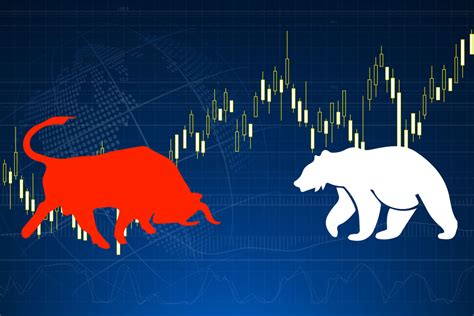Table of contents
Part 1 - Fundamentals Driving Forex Sentiment
Part 2 - Sentiment Indicators and Tools Used by Traders
Part 3 - Applying Forex Sentiment to Live Trading Decisions
Part 4 - Global and Geopolitical Events Shaping Forex Sentiment
Part 5 - Central Bank Psychology and Trader Sentiment
Part 6 - Risks, Misinterpretations, and Sentiment Traps in Forex
Traders often focus on charts, economic reports, or interest rate moves, but behind every market action lies a deeper force: collective perception. Forex sentiment reflects how traders, institutions, and global investors feel about currency pairs at any given moment. These emotions, often influenced by news, economic indicators, and risk appetite, can drive price swings before fundamentals catch up. Understanding how to read and respond to these shifts opens the door to a more responsive, adaptive style of trading. Rather than reacting to past data, traders who monitor sentiment gain insight into what the market is likely to do next.
Fundamentals Driving Forex Sentiment
Understanding the roots of forex sentiment reveals how macroeconomic forces quietly shift currency behavior before prices reflect it.

The Role of Interest Rate Expectations in Market Mood
Central banks like the Federal Reserve and European Central Bank often drive sentiment through interest rate decisions, even before official hikes or cuts take place.
The Interest Rate Differential between economies fuels speculation, influencing demand for one currency pair over another.
Traders frequently respond not to actual rate changes, but to shifts in market expectations based on forward guidance or speeches.
Divergence in policy paths—such as tightening by the Bank of England versus continued easing from the Bank of Japan—creates momentum and emotion-driven volatility.
Speculation surrounding inflation projections and policy signals feeds into short-term movements, reflecting confidence or fear before fundamentals play out.
How Inflation Data Shapes Sentiment in Major Currency Pairs
Changes in Inflation Rate directly affect expectations for future monetary tightening or easing, which immediately reshapes trader psychology. When inflation outpaces forecasts, expectations for hawkish central bank reactions increase, which often strengthens the national currency. On the contrary, a drop in inflation expectations signals potential dovishness, deflating enthusiasm around the currency.
The sensitivity to inflation is not uniform. For instance, the Swiss National Bank may tolerate stronger inflation than the Bank of Canada, leading to asymmetric reactions across currency pairs. These differences in central bank tolerance for inflation volatility can trigger abrupt sentiment flips, especially when paired with high-frequency indicators like consumer spending or housing starts.
| Central Bank | Inflation Sensitivity | Likely Sentiment Reaction | Impacted Currency Pairs | Typical Market Reaction |
|---|---|---|---|---|
| Federal Reserve | High | Hawkish Tilt | USD/JPY, EUR/USD | Dollar Strengthens |
| Bank of England | Moderate | Reactive Depending on Core | GBP/USD, EUR/GBP | Volatile Short-Term Swings |
| European Central Bank | Deliberate | Gradual Sentiment Shift | EUR/USD, EUR/CHF | Slow, Confidence-Based Moves |
| Reserve Bank of Australia | High | Quick Shifts in Sentiment | AUD/USD, AUD/JPY | AUD Reacts Strongly to CPI |
Unemployment and GDP: Sentiment Shifts in Reaction to Economic Surprises
When major economies release Unemployment Rate or GDP Growth data, the immediate reaction often overrides deeper analysis. Forex sentiment thrives on surprise. If the U.S. unemployment rate unexpectedly drops while job creation rises, market participants may quickly increase their bets on dollar strength—even if broader consumer confidence remains subdued.
However, this initial optimism can be short-lived. Sentiment is volatile because it reflects how traders feel, not just what they know. A disappointing GDP report from Germany might sour EUR/USD sentiment faster than it influences actual economic forecasts.
Markets interpret such surprises through the lens of capital flows, seeking safety or higher yields, resulting in reactive but powerful sentiment shifts.
Consumer Confidence and Retail Sales as Early Sentiment Signals
Retail Sales figures hint at consumer spending, which often leads broader economic indicators like GDP.
A sharp drop in retail activity typically erodes investor confidence, triggering bearish moves in related currencies such as the British pound or Australian dollar.
Consumer confidence surveys reflect expectations about future income, employment, and inflation—all of which shape market sentiment subtly but consistently.
Forex traders use this data to anticipate interest rate expectations, especially in sentiment-driven environments where fundamentals lag.
For example, weak Retail Sales in Canada combined with declining housing starts may spur negative expectations toward the Bank of Canada’s monetary policy stance, affecting the CAD/JPY and USD/CAD pairs.

Sentiment Indicators and Tools Used by Traders
Tracking forex sentiment means understanding the instruments traders rely on to gauge emotion beneath the numbers.
Commitment of Traders (COT) Report: Tracking Positioning
Issued weekly by the Commodity Futures Trading Commission, this report reveals how institutional traders and speculators are positioned in key currency pairs.
It helps traders assess whether a market is overbought or oversold based on net long or short positions.
The difference between commercial hedgers and non-commercial traders signals crowd bias and potential reversals.
Used with caution, the COT data reflects delayed positioning, but its trend can foreshadow persistent market sentiment around currencies like the USD or JPY.
When paired with data from central banks like the Federal Reserve or Bank of England, the COT becomes a predictive element of emotional momentum.
Open Interest and Volume in the Forex Market
Trading volume and open interest often reveal the strength or weakness of a market move. High volume with rising open interest signals fresh momentum, often confirming a strong forex sentiment trend. Conversely, low volume or falling open interest during a breakout may indicate a lack of conviction or fading investor confidence.
| Indicator | Meaning | Sentiment Signal | Trading Implication |
|---|---|---|---|
| Rising Open Interest | New positions entering the market | Increasing conviction | Strengthening trend |
| Falling Open Interest | Traders exiting positions | Weakening sentiment | Possible reversal or consolidation |
| High Volume | Heavy participation | Strong belief in direction | Validates trend |
| Low Volume | Lack of interest | Uncertain or fading sentiment | Watch for traps or false breakouts |
This metric becomes especially relevant around high-impact events, such as interest rate decisions or unexpected inflation rate releases.
Speculative Positioning vs. Hedging: Interpreting Sentiment Contradictions
At times, speculative flow and real-economy hedging create tension. Speculators may build long positions in AUD anticipating commodity price recovery, while exporters hedge against a fall due to trade wars or resource scarcity. This contradiction creates a divergence between raw sentiment and cautious protection.
Speculators often trade based on short-term momentum and risk appetite.
Hedgers use forex markets to lock in future rates, often acting contrary to speculative flow.
Spotting this contradiction gives savvy traders an edge in forecasting sentiment flips.
During periods of heightened volatility, such as post-election trading, this contrast becomes exaggerated, leading to unstable exchange rate behavior.
Social Sentiment and News-Based Algorithms
As financial markets digitize, news-based algorithms and social media analysis have become central to understanding market psychology. Traders now gauge sentiment in real-time by tracking emotional keywords, trending headlines, and mass behavioral signals across platforms.
For example, a sudden spike in tweets mentioning “rate hike” or “central bank tightening” during a Federal Reserve press conference can ignite volatility. Similarly, AI-based sentiment tools scrape headlines for keywords tied to Brexit, geopolitical instability, or pandemics, triggering automated responses that ripple through currency pairs like EUR/GBP or USD/CHF.
This approach allows forex participants to react faster than traditional reports, capturing the instant mood of the market as global narratives unfold.
Volatility Index (VIX) and Forex Risk Appetite
The Volatility Index (VIX), often labeled the “fear gauge,” reflects expected stock market volatility but has wide influence on forex sentiment. When the VIX spikes, it usually indicates rising risk aversion, leading to flows into “safe haven” currencies such as the Japanese yen or Swiss franc.
During geopolitical flare-ups or major financial regulations debates, elevated VIX levels translate into downward pressure on high-yield or emerging market currencies. At the same time, stable VIX readings suggest growing investor confidence, which typically supports carry trade strategies involving AUD or NZD.
Understanding this index within the currency context requires a layered view. Traders weigh it against capital flows, liquidity conditions, and cross-asset correlations—making the VIX not just a number, but a sentiment barometer.
Applying Forex Sentiment to Live Trading Decisions
Integrating sentiment into trading decisions gives traders an edge in real-time market response, especially during volatile events driven by global and economic forces.
Combining Technical Analysis with Sentiment Indicators
Trend confirmation: When price action aligns with bullish sentiment—such as rising open interest or optimistic GDP Growth forecasts—traders gain confidence in continuation patterns.
Reversal spotting: Divergence between sentiment indicators and technical indicators often signals exhaustion. For example, overbought RSI combined with declining trading volume may precede a trend reversal.
Support/resistance + sentiment flow: Sentiment can validate or invalidate key technical zones. If a level holds while sentiment becomes increasingly negative, breakout traders may reconsider.
Use of oscillators: Sentiment overlays improve tools like MACD or Bollinger Bands, especially during events like Interest Rate Decisions by the Federal Reserve or European Central Bank.
Multi-timeframe synergy: Long-term sentiment trends provide context for short-term technical entries, especially around volatile currency pairs like USD/JPY or GBP/USD.
Contrarian Trading: When Sentiment Becomes Overcrowded
When everyone is on the same side of a trade, the balance tips. High speculative positioning combined with extreme market sentiment creates fertile ground for reversals.
Sentiment extremes are often confirmed by metrics such as the Commitment of Traders (COT) report.
Contrarian setups thrive after events like elections or geopolitical shocks, when price moves become overextended.
During periods of excessive optimism in the stock market, traders may short overbought commodity-linked currencies.
Currency pairs like AUD/USD or NZD/JPY often exhibit sharp reversals when carry trade euphoria fades.
Key contrarian moments often appear when positive news fails to push prices higher—a sign of underlying weakness.
Using Sentiment to Time Entry and Exit Points
Sentiment acts as a rhythm beneath the noise. Entering a trade requires timing—not just based on indicators, but on how the crowd is reacting. When a currency’s positive fundamentals are already priced in, overly bullish sentiment becomes a liability.
For instance, the Swiss National Bank may keep rates steady, but if markets expected a cut, the CHF might rally on disappointment. Similarly, a sudden surge in Retail Sales might drive initial optimism, but if paired with weak housing starts, sentiment may fade quickly.
| Sentiment Condition | Entry Signal Example | Exit Signal Example | Currency Context |
|---|---|---|---|
| Overwhelming Bullishness | Wait for momentum stall before entry | Exit on first break of upward structure | EUR/USD, GBP/JPY |
| Bearish Crowd with Good Data | Enter early after surprise event | Ride until sentiment neutralizes | USD/CAD, AUD/USD |
| Sentiment Divergence | Entry after price-sentiment realignment | Exit near reversion midpoint | NZD/JPY, USD/CHF |
| Mixed Positioning | Layer in cautiously over confirmation | Reduce exposure on macro data release | USD/JPY, EUR/GBP |
Forex Sentiment in High-Impact News Environments
Each major data release becomes a stage for forex sentiment to manifest. Take a surprise Unemployment Rate drop in the U.S.—markets might spike the dollar, but sentiment determines if the move holds. During Interest Rate Decisions, price often overshoots as emotional trading dominates.
Traders must differentiate between data and its perception. Sometimes, dovish tones from the Bank of Japan strengthen the yen due to market overexposure. At other times, a hawkish Bank of Canada move is ignored when sentiment is fatigued by previous rallies. News doesn’t just move price—it reshapes how traders feel about risk.
Sentiment filters real-time updates into market action, making it essential during volatile moments like central bank speeches, trade war announcements, or inflation rate surprises.
Liquidity and Market Depth in Sentiment-Driven Moves
Low liquidity exaggerates sentiment-based reactions, especially during Asian or early European trading hours.
Market depth becomes critical when crowd emotion overwhelms rationality, often seen in risk aversion spikes following geopolitical events.
Wide bid-ask spreads can develop during sudden sentiment flips, especially in exotic or low-volume currency pairs.
Thin books mean sentiment can move prices without fundamental backing—seen during post-holiday periods or prior to major releases.
Institutional players may exploit these conditions to run stops, creating false breakouts that trap sentiment-driven retail trades.
Volatility Events and Sentiment Flipping Behavior
The flash of red across screens. A sudden surge in the Volatility Index (VIX). Traders scramble to reposition. Sentiment doesn’t just fade—it flips. During these events, one emotion replaces another at speed: euphoria turns to panic, confidence gives way to fear.
The transition can be triggered by a pandemic resurgence, a surprise central bank pivot, or a sudden trade sanction. The key is to recognize the early signs of this flip. A rising risk premium in emerging markets or a withdrawal from the carry trade space can signal the shift before headlines confirm it.
When sentiment flips, old support becomes new resistance. Investor confidence disintegrates, and new narratives take hold. Traders who recognize this dynamic early can align with the new direction before the majority catches up.
Global and Geopolitical Events Shaping Forex Sentiment
Major global disruptions often reshape forex sentiment faster than fundamentals, driving short-term emotion-led decisions across currency markets.
Elections and Political Instability: Currency Shockwaves
Elections influence forex markets by altering investor confidence in the direction of fiscal and monetary policy.
Political instability, such as contested elections or sudden regime changes, triggers volatility in emerging markets and weakens national currency pairs.
Anticipation of regulatory changes or shifts in interest rate policy post-election often creates sharp repricing, especially in markets like GBP during Brexit cycles.
Traders monitor platforms for shifts in polling sentiment, policy speeches, and coalition dynamics to gauge sentiment movement.
Currency reactions to elections are often more sentiment-driven than fact-based, particularly when tied to trade balance promises or threats of capital controls.
Trade Wars and Sanctions: Risk Sentiment Reactions
Trade wars and economic sanctions often ripple through the forex space by triggering sharp reversals in market sentiment, particularly around commodity prices, capital flows, and emerging market currencies. These events amplify uncertainty, causing abrupt realignments in both institutional and retail positioning.
When the United States imposed tariffs during the China trade dispute, it wasn’t just the CNY that reacted. The fallout spread to the Australian dollar, given its close trade ties to China, and even influenced safe haven flows into the Swiss franc and Japanese yen. Market response varied depending on regional exposure to the affected economies, reflecting shifts in risk aversion.
| Event Type | Affected Currencies | Sentiment Outcome | Forex Impact Example |
|---|---|---|---|
| Bilateral Trade War | USD, CNY, AUD | Negative for risk assets | AUD/USD decline during US-China dispute |
| Energy Sanctions | RUB, EUR, NOK | Sharp risk-off moves | EUR/USD volatility during Russia crisis |
| Technology Sanctions | TWD, KRW, JPY | Uncertainty in tech exports | Capital flows into USD and JPY |
| Retaliatory Measures | Multiple EM currencies | Elevated VIX readings | Rush to JPY, CHF during tit-for-tat moves |
Pandemics, Crises, and Investor Panic Cycles in FX
When crisis strikes—whether a pandemic, an energy crisis, or a collapse in supply chains—forex markets don’t wait for data. They react immediately to fear. Panic behavior pushes capital into perceived havens, while riskier currencies suffer indiscriminately.
During the early stages of the COVID-19 outbreak, the Volatility Index (VIX) surged, and traders exited carry trade positions, sending the Japanese yen and U.S. dollar soaring. Meanwhile, emerging markets faced brutal outflows, with currencies like the BRL, ZAR, and TRY collapsing against the majors.
In these cycles, sentiment doesn’t follow logical sequencing—it behaves like shockwaves. One headline from the World Health Organization, a spike in mortality data, or a sudden change in global mobility patterns can turn risk-on trades into free falls. Panic cycles are magnified by low liquidity, especially outside of peak trading hours, making each move more violent than the last.
Unlike economic indicators, which reflect past activity, these crisis-driven reactions stem from future fear—a core element of forex sentiment.

Central Bank Psychology and Trader Sentiment
Traders respond not just to what central banks do, but to how they communicate and how their decisions shift sentiment across currency markets.
Federal Reserve Rhetoric and USD Sentiment Swings
Fed statements shape expectations faster than actual interest rate decisions.
Even subtle changes in tone affect USD sentiment across currency pairs like EUR/USD or USD/JPY.
Markets often price in moves based on language suggesting “patience,” “moderation,” or “aggressiveness.”
When paired with strong Inflation Rate or Unemployment Rate data, rhetoric becomes the leading sentiment driver.
Traders front-run actual policy shifts, making Fed press conferences critical for emotional positioning in forex markets.
ECB and EUR Market Tone: Between Policy and Perception
The European Central Bank has long been a master of cautious language. While their monetary policy is often slower to shift than that of the Federal Reserve, perception tends to swing faster. Traders parse every ECB press conference, even when policy remains unchanged, looking for sentiment clues in tone and framing.
When the ECB hints at prolonged asset purchases or delayed rate hikes, EUR sentiment tends to weaken, particularly against currencies tied to rising yield environments like USD or AUD. Conversely, when inflationary language becomes more assertive, traders front-load euro buying in anticipation of a shift in tone. The actual policy lag behind the perceived direction often causes increased forex volatility around the EUR/USD and EUR/GBP pairs.
BOE, Inflation Expectations, and Sterling Speculation
The Bank of England (BOE) reacts heavily to domestic Inflation Rate dynamics, making GBP a highly sentiment-sensitive currency.
Hawkish BOE comments can rapidly elevate Sterling speculation, especially when reinforced by data like Retail Sales or wage growth.
Political noise, including Brexit-related risk, further distorts sentiment signals around the BOE.
Currency pairs like GBP/JPY or GBP/USD often exhibit sharp moves around BOE speeches and Monetary Policy Committee votes.
Traders balance inflation expectations with market anticipation of interest rate differentials, guiding long or short positions.
BOJ and the Sentiment Around Ultra-Loose Monetary Policy
The Bank of Japan’s persistence in ultra-loose monetary policy continues to define the forex sentiment narrative around the Japanese yen. While most major central banks pivoted to tightening cycles, the BOJ stayed dovish, positioning the yen as a preferred funding currency in carry trades.
This long-standing sentiment is embedded in how traders treat JPY—not just as a low-yield currency, but as a signal of global risk aversion or confidence. When Volatility Index (VIX) readings spike, funds unwind carry trades, causing sudden JPY strength. In contrast, during stable periods, traders short the yen on expectations that ultra-loose policy remains.
JPY’s behavior thus mirrors the emotional tide of broader market confidence, shaped as much by BOJ policy as by how that policy is interpreted globally.
Market Reactions to Surprise Rate Hikes or Cuts
Surprise decisions by central banks can cause immediate sentiment overhauls across major and minor currency pairs. These events break from anticipated guidance and often reflect behind-the-scenes concerns—such as sudden inflation pressure or urgent financial stability concerns.
| Central Bank | Surprise Action | Sentiment Outcome | Impacted Currency Pair | Immediate Reaction |
|---|---|---|---|---|
| Federal Reserve | Unexpected rate hike | Hawkish sentiment surge | USD/CHF, USD/CAD | Dollar appreciation |
| Reserve Bank of Australia | Emergency rate cut | Risk-off sentiment spike | AUD/JPY, AUD/USD | AUD selloff |
| Bank of England | Hold amid inflation rise | Market confusion | GBP/USD, EUR/GBP | GBP volatility |
| Bank of Canada | Sudden hike | Confidence in CAD rises | USD/CAD, CAD/JPY | CAD strength |
These events often coincide with geopolitical risks, energy crisis updates, or unexpected inflation metrics, amplifying the emotional reaction in the forex space.
Forward Guidance and the Sentiment Impact of Central Bank Communication
Forward guidance has become a psychological battleground between central banks and the market. When institutions like the Swiss National Bank or Bank of Canada signal policy trajectories months ahead, forex traders use this language to position themselves long before any policy action.
The effectiveness of forward guidance lies in its ambiguity. A phrase like “data dependent” can mean restraint or readiness. When guidance aligns with GDP growth or rising commodity prices, markets read it as credible and sentiment reinforces the trend. But conflicting signals—such as hawkish tone amid weak consumer spending—cause confusion, creating choppy sentiment and risk-driven trading.
These nuances often matter more than rates themselves. How traders feel about what might happen frequently drives price before anything actually changes.

Conclusion
Reading forex sentiment is less about decoding a perfect system and more about tuning into the emotional current that drives market behavior. Economic indicators like inflation and unemployment figures may tell part of the story, but how traders interpret those numbers often matters more. When central banks shift tone, when elections rattle confidence, when trade disputes erupt—sentiment is the signal that precedes the move. Successful trading in this environment means understanding how sentiment shapes currency pair behavior, knowing when to go with the crowd, and when to step aside from it. With the right tools, a grasp of macroeconomic signals, and a clear awareness of how emotion and positioning intersect, sentiment becomes a strategic advantage—not just noise.
Forex sentiment refers to the overall attitude or mood of traders toward a specific currency or the forex market in general. It's important because it helps identify potential market turning points, especially when sentiment becomes overwhelmingly bullish or bearish.
Use the Commitment of Traders (COT) report
Monitor open interest and volume
Track speculative positioning using retail sentiment tools
Follow news-based sentiment scoring tools
These indicators influence how traders perceive a currency’s strength or weakness, often ahead of actual policy decisions.
Inflation rate and interest rate expectations
GDP growth surprises
Unemployment claims and labor reports
Consumer spending is a leading signal of economic health. A rise in spending often boosts confidence in a currency, while a drop can signal economic slowdown, prompting bearish sentiment.
Even slight shifts in tone from institutions like the Federal Reserve or European Central Bank can sway market sentiment dramatically.
Interest rate decisions
Policy statements and press conferences
Forward guidance language
Events like trade wars, sanctions, or political instability create uncertainty, which typically increases risk aversion in the forex market. This can lead to safe-haven flows into currencies like the US dollar, Swiss franc, or Japanese yen.
Shifts in investor confidence, reflected in equities or bonds, can signal broader risk appetite or fear. This directly affects currency strength, especially in carry trade strategies or when capital flows move in or out of emerging markets.


